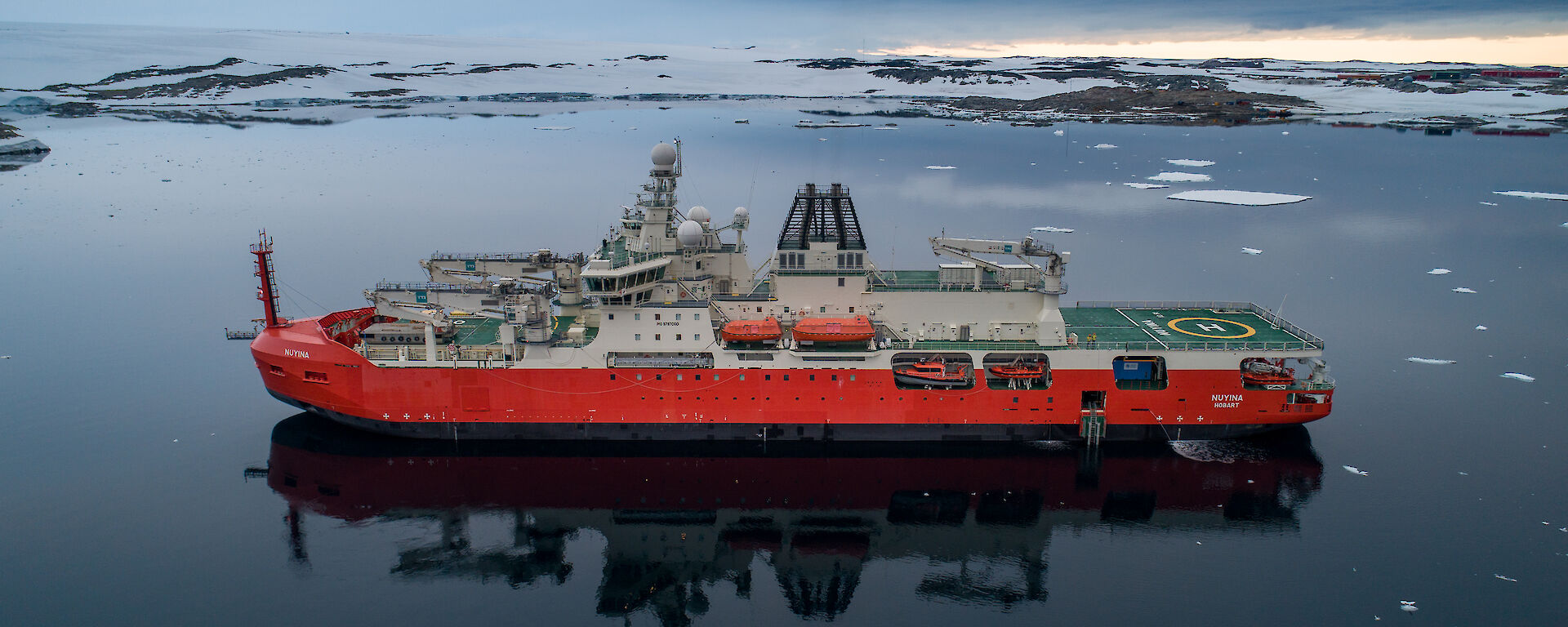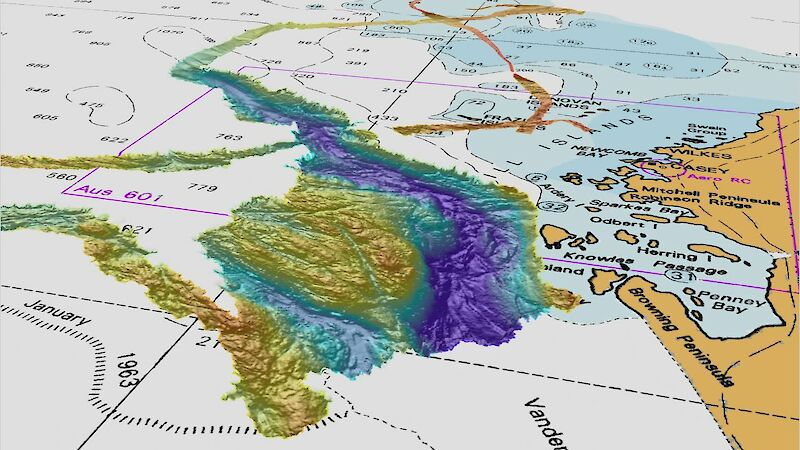From Australian Antartica Program
Survey data from a vast underwater valley off East Antarctica, collected during icebreaker RSV Nuyina’s first voyage, has been publicly released through the national seabed mapping program, AusSeabed.
The 2300 metre-deep, 2000 metre-wide and at least 55 kilometre-long valley, extending from underneath the Vanderford Glacier into the ocean, was mapped using Nuyina’s multibeam echosounder, which uses sound to build a visual picture of the sea floor.
Australian Antarctic Data Centre Manager, Dr Johnathan Kool, said the raw ‘bathymetry’ (seabed depth) data from the valley and other features mapped during Nuyina’s voyage, has been cleaned and processed and can now be used for research.
“Through AusSeabed, the Australian Antarctic Division and other partners are contributing jigsaw pieces to fill in the Australian seabed puzzle, which researchers and policy-makers can then use to meet their needs,” Dr Kool said.
“For example, our Southern Ocean and Antarctic seabed bathymetry provides information about habitat that can be used in managing Southern Ocean fisheries, or in research planning – such as where to deploy seabed instruments to study krill.”
Dot zapping
Nuyina’s raw seabed data was quality assured by AusSeabed partner Geoscience Australia.
Dr Kool said that when the multibeam echosounder sends pings of sound towards the seabed, some of the soundings reflect off ice and organisms in the water, or penetrate down in to the seabed.
The Vanderford Glacier’s valley is the first of many exciting new discoveries anticipated, as RSV Nuyina collects seabed soundings during transits between Australia and Antarctica and on dedicated marine science voyages.
While there have been hints of what lies beneath in previous surveys near the glacier and elsewhere, RSV Nuyina brings a level of detail to seabed mapping that was not previously available.
“Nuyina’s high definition mapping capability brings certainty to our data – it is going to turn what we think is down there into what we know,” Dr Kool said.
Data from AusSeabed also feeds in to global seabed mapping initiatives, such as the Nippon-Foundation-GEBCO Seabed 2030 project, which aims to develop a definitive map of the world’s ocean floor by 2030





No comments:
Post a Comment